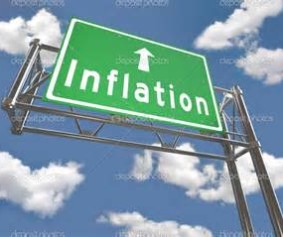Signs Of Inflation Take Hold – Implications For The Fed
Thursday, May 15th, 2014 @ 10:07PM
Between the Lines
by Gary D. Halbert
The long-awaited upward move in inflation may finally be arriving. Producer (wholesale) prices surged 0.6% in April, the largest monthly gain in more than four years, coming on top of a 0.5% gain in March. In the past year, producer prices have increased a moderate 2.1%.
Yet in the past three months, the Producer Price Index (PPI) is up at a 4.1% annual rate. The acceleration is in prices for both goods and services. Goods prices are up 2.5% in the past year and have climbed at a 3.9% annual rate in the past three months; services are up 2% from a year ago and have climbed at a 4.1% annual rate in the past three months.
Prices further back in the production pipeline (intermediate demand) are showing similar acceleration. This suggests that we’ll be seeing higher prices for goods and services for at least the next few months. The jump in wholesale prices over the last few months does not necessarily mean that this trend will continue beyond the next few months, but then again, it could.
We have not seen a corresponding rise in the Consumer Price Index yet, but the CPI normally lags the PPI. The CPI for April came out this morning at 0.3%, higher than expected, following 0.2% in March and 0.1% in February. For the last 12 months, the CPI has risen 2.0%. But look for the CPI to go up more in the next several months due to the recent jump in the PPI.
Implications for the Fed
Taken as a whole, the recent trend in producer price inflation suggests the Federal Reserve may be moved to consider ending its QE purchases sooner than October of this year. The next policy meeting is on June 17-18, and it will be interesting to see if the policy statement will include any change in the Fed’s outlook for inflation in light of the recent jump in the PPI.
The Fed has maintained a benign outlook for inflation for the last couple of years. The Fed’s target for inflation, as measured by “personal consumption expenditures” (PCE), is 2.0-2.5% a year, and PCE has been running below that range recently. With the latest jump in the PPI, we’ll have to read the Fed’s next policy statement on June 18 closely to try and see if the Fed hints of any concern over inflation.
Yields on 10-year and 30-year Treasuries have fallen recently, largely due to a flight to safety, and are not showing any market concern for the recent jump in PPI. If bond yields remain in the current low end of the trading range until the Fed meeting on June 17-18, then I would not expect any change in the Fed’s rate of tapering its bond buying by $10 billion per meeting.
However, the PPI report for May will be released on June 13, four days before the next FOMC meeting. If the next PPI report shows another large increase for May, that might rattle the Fed enough to consider accelerating the taper. We’ll just have to wait and see.
Bonds – Take Some Profits & Lighten-Up
As noted above, Treasury bond yields have fallen in recent weeks, largely due to geopolitical concerns (Russia, Syria, etc.). The 30-year Treasury bond has plunged from near 4% at the beginning of this year to 3.3% as this is written. I don’t make market predictions very often, but in this case, I recommend that you use this decline in bond yields to take some profits and reduce exposure.
We all know that interest rates are going to rise at some point. We all know that the Fed’s QE bond buying program will stop before the end of this year. And as discussed above, there are growing signs that inflation has started to rise, which is historically bearish for bonds. All of this suggests that now may be a good time to cash-in some profits and lighten-up on long-dated bonds.
I’ll be talking about this more just ahead, but you don’t want to be among the herd that will bolt from bonds when it becomes clear that interest rates are trending higher. You read it here first.
Posted by AIA Research & Editorial Staff
Categories: Between the Lines




